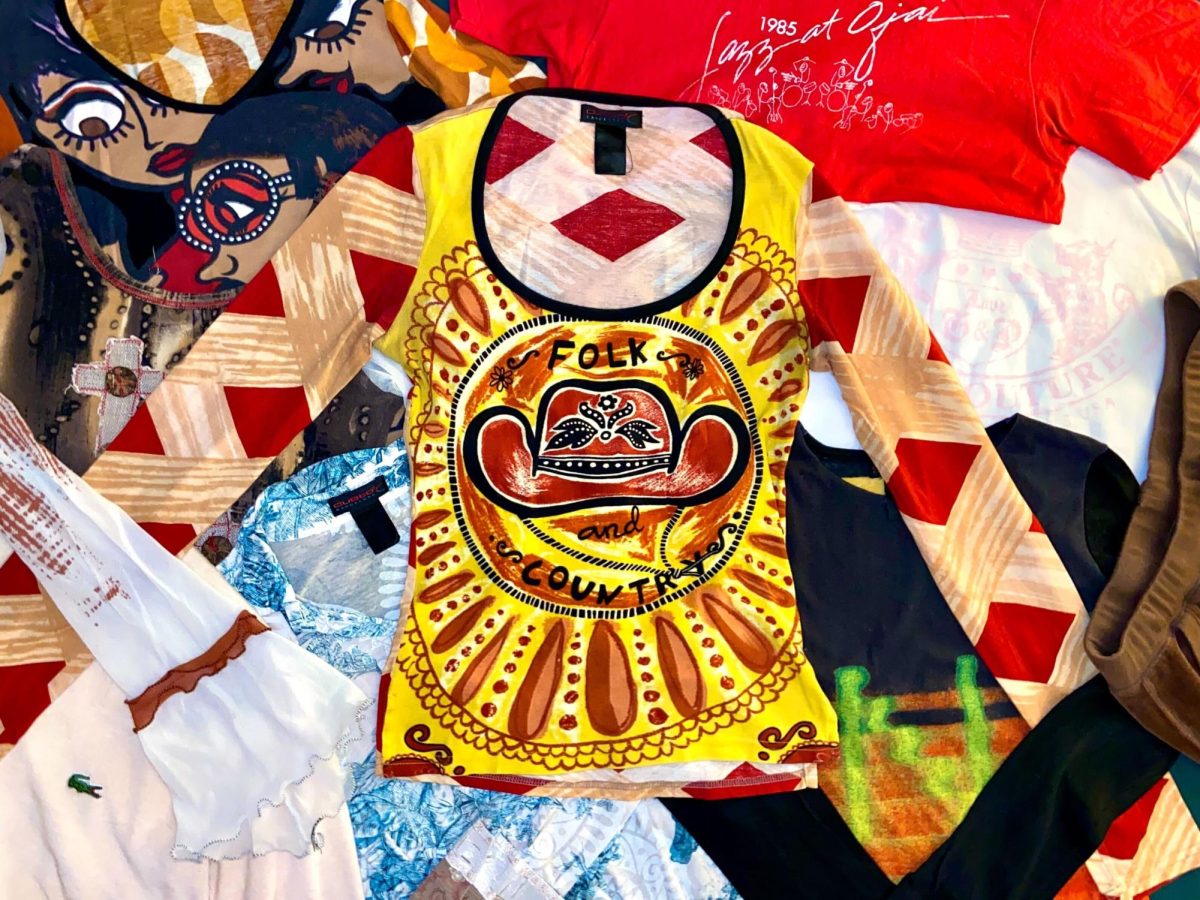One of my most treasured possessions is a shirt. Specifically, it’s a Custo Barcelona top from the ’90s that once belonged to my aunt. The shirt is made from a soft cloth in a flashy orange, yellow and red print; the front is emblazoned with the words “Folk and Country” and a cowboy hat. The sleeves and the back of the top are made from a different print that people have said remind them of a cherry pie with a lattice top crust. It’s the crown jewel of my closet, and the only reason I own it is because my aunt decided not to get rid of it while cleaning her closet.
Thrifting is a common practice nowadays, and I’m familiar with the time and effort required to find the perfect piece at a vintage shop. Lucky for me, I didn’t have to go through that to find my favorite shirt. I didn’t have to stomach a bloated price tag and exorbitant shipping fee on an online secondhand market, either. All I had to do was visit my aunt in Spain, who gave me the shirt — gladly — for free.
My mother and my aunt both have pretty sizable collections of tops from Custo Barcelona and similar brands that were popular in Spain during the 1990s and 2000s. Instead of passing the pieces along to consignment shops for a meager profit or throwing them in the trash, they asked me if I wanted them first — a gesture that I will appreciate forever. The attire they’ve given me is incredibly unique and stylish, but it’s not just the aesthetics I appreciate. While I’m not sure if they kept them with me in mind, a lot of their favorite pieces ended up in my possession. The fact that they trust me with clothing they’ve kept throughout several moves over the years creates an emotional bond between us and the clothes we share.
Building a unique and personally meaningful closet takes work. You don’t just have to buy the clothes; you have to wear them, try them out with new outfit combinations and create memories for the pieces to be truly yours. Sometimes we humans develop personal connections with inanimate objects such as clothes, even if we know they’re just pieces of fabric bound by thread. That’s why I have no aversion to wearing used clothing — in fact, when someone asks me where my favorite tops are from, I proudly state that they’re either my mother’s or my aunt’s. It’s an honor for me to wear a shirt that was once also a prized piece of a loved one’s closet.
It’s not just vintage brand-name pieces that deserve this position of prestige — even my friend’s ratty, old, oversized pajama pants that I borrowed during a stay at her house and never returned have a personality to them that I cherish. Clothes are more than their brand or their size — their previous ownership can add a lot of character to them, even if that previous owner would’ve thrown the garment away had they not forgotten about it.
Hoarding clothes is a radical revolt against the fast fashion industry, which would prefer to have you think that the best closets are the ones that regurgitate their contents constantly from year to year in order to make room for the latest (and soon-to-be disposed of) trends. I argue that the most exemplary closets are ones that are curated over time with care and the help of people close to you. Next time you find yourself pondering whether or not to bring a shirt you used to like to a consignment shop, I say you shouldn’t — for all you know, one day someone might write a whole article just to thank you.


